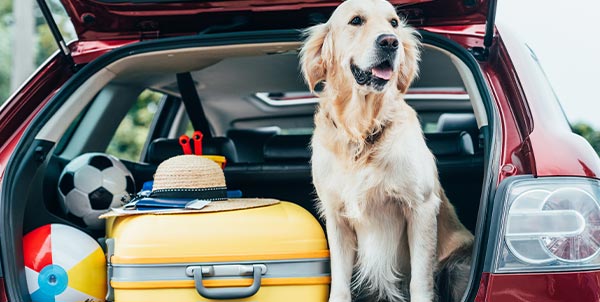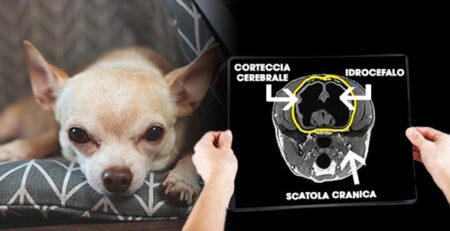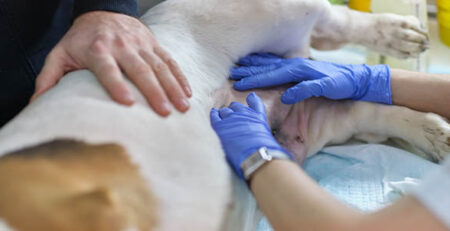Table of Contents
Vacation on the road with four-legged in a car or RV? Here are some practical tips to make the trip enjoyable, safe and fun for both you and your dog.
Traveling by car or RV with a dog in tow is an increasingly popular custom that requires, however, a number of precautions to make this experience safe and relaxing for everyone.
Is the dog used to car transportation?
In anticipation of a trip and if your dog has no previous experience or is unfamiliar with the car, ideally you should give him time to familiarize himself with the vehicle.
With the car with the engine off, let it smell and explore the passenger compartment.
Start with short routes and then gradually increase the time and duration of the route.
Before embarking on a long car trip, it is a good idea to gradually “train” the animal for travel.
The placement of the dog in the car or RV while traveling: what does the Highway Code require?
Specific provisions set by the Highway Code apply to the transportation of pets in motor homes and automobiles.
Art. provides that pets (dog or cat) shall not occupy the driver’s cabin or be stationed in the front seats.
“Only pets may be transported, even in numbers greater than one as long as they are kept in a special cage or container or in the rear compartment at the driver’s seat specially divided by netting or other similar suitable means, which, if permanently installed, must be authorized by the competent provincial office of the General Directorate of M.C.T.C.“
In violation of this article, the Highway Code provides for the payment of hefty fines and the deduction of points from the license.
But regardless, the violation may result in a safety hazard to the driver of the vehicle and the animal itself.
Why can’t the four-legged animal stay in the front seats during the trip?
An animal in the cockpit can be a nuisance but also a potential danger.
Sudden braking, for example, could cause unexpected and uncontrolled reactions on the part of the animal, thus interfering with your driving behavior and vehicle control.
It is irresponsible to put your safety, your four-legged friend’s safety and the safety of other passengers at risk.
How to place the four-legged animal in the back seats?
The animal, if it is only one, must be placed exclusively in the rear seats or in the trunk, which in a motorhome basically corresponds to the living quarters.
If the pets to be transported are more than one, however, the Highway Code requires that they travel inside special carriers, and that the carriers be placed in the back seats.
Alternatively, you can carve out a space in the rear compartment of your RV or car for the animal as long as it is bounded by a divider or net.
What to do before leaving?
Feed the dog or cat a meal, as long as it is light, no later than four hours before the scheduled departure time.
By doing so, your little friend will not be completely on an empty stomach, but it will decrease the likelihood that he or she will regurgitate ingested food.
Strictly avoid departures during the sunniest hours of the day.
Arrange a game, blanket or pillow that your pet usually uses to make the environment familiar and comfortable.
Bowl, water and moistened, refreshing wipes should never be lacking.
How to behave during the trip?
Heat, air conditioning and abrupt temperature changes are dangerous for our animals.
While traveling, it is preferable to keep at least one window partially open to promote air exchange and ventilation inside the passenger compartment.
Schedule regular stops (roughly every two hours) to allow the dog to get out of the car, stretch his paws and go potty.
Hook the leash to the dog’s collar inside the passenger compartment and NEVER open the tailgate if the dog is loose.
Ideally, you should leave the dog hooked to the leash secured in the car until you are ready and certain to let him off in total absence of escape risk.
There are special leashes on the market with a special universal buckle that can be inserted into the buckle lock of any seat belt.
Drive carefully by avoiding acceleration and braking: kinetosis (i.e., motion sickness) can also affect animals.
What is kinetosis caused by?
Kinetosis arises when receptors responsible for balance control located in the animal’s inner ear (the so-called vestibular apparatus) are stimulated by irregular movements.
The cause of kinetosis can also be attributed to the perceived fear and anxiety of the four-legged animal who has not become familiar with transportation or to previous traumatizing travel experiences.
Recognizing the symptoms of kinetosis is critical to taking the necessary steps to treat it:
- Hypersalivation, nausea and vomiting
- Yawning and felling
- Precarious balance and dizziness
- Agitation and frenzy
- Shivers and tremors
- Diarrhea
How is kinetosis prevented and managed?
Each dog or cat is its own case, and your veterinarian is best suited to assess which strategy to adopt to manage the onset of kinetosis.
If the symptoms do not subside or disappear as soon as the vehicle stops moving and the animal just can’t adapt to travel, it might help to ‘administer some specific medication to ease its discomfort and promote relaxation.
Phytotherapy, Aromatherapy, and Homeopathy offer a number of effective natural remedies with no contraindications to alleviate and prevent kinetosis: from Bach Flowers, ginger, peppermint, and passion flower, the choice is quite wide.
Whatever remedy is used, remember that it should be administered ONLY and EXCLUSIVELY after consultation with a Veterinary Doctor and strictly adhering to the quantities indicated.
In this regard, we would like to remind you that the Veterinary Doctors on staff at La Veterinaria Clinic are also always available to help you prepare your pet for travel.
Clinic The Veterinary Clinic is open daily h24 including holidays and with First Aid service from 8 pm to 8 am.
For the joy of seeing them HAPPY.











